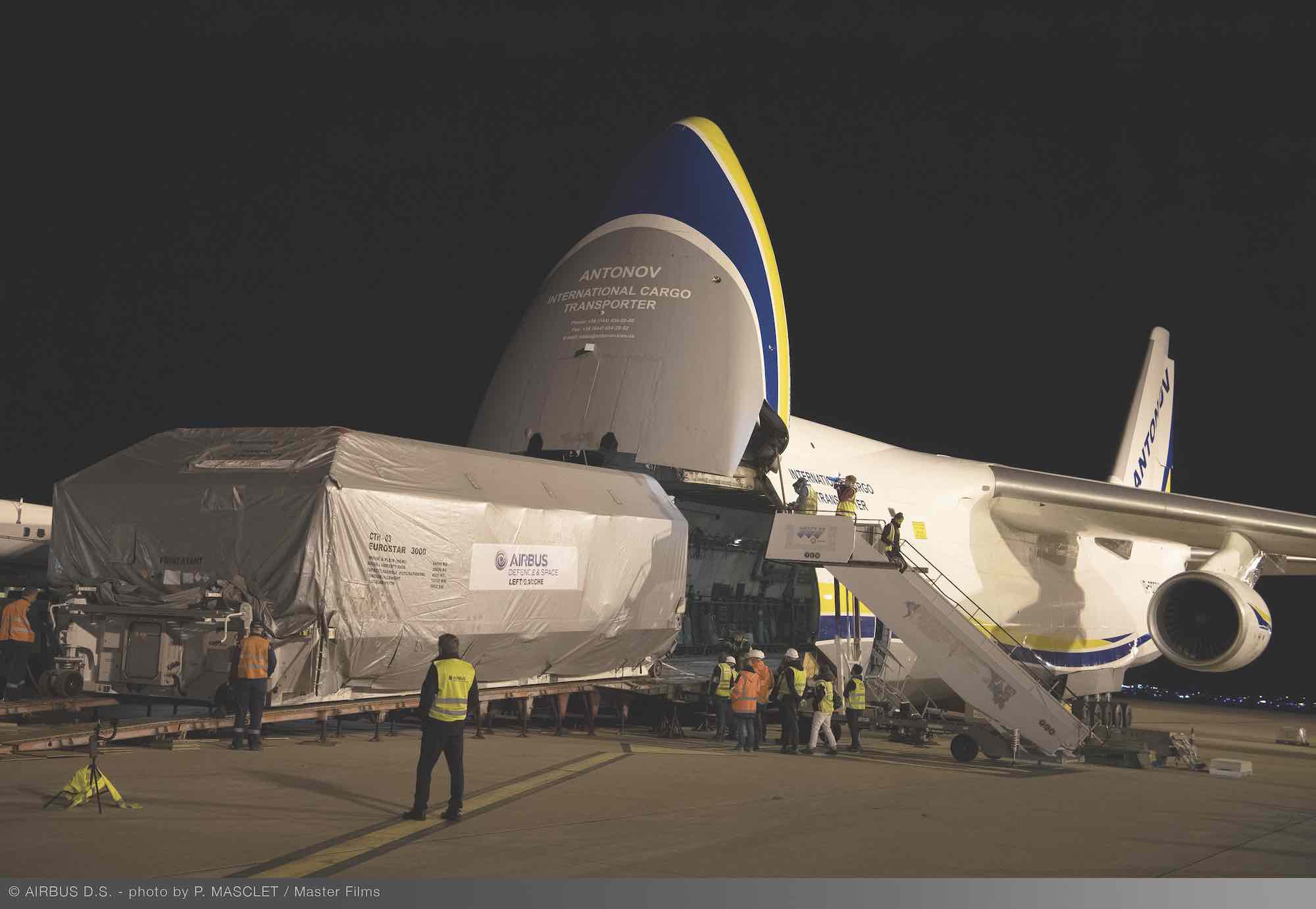Antonov shortage threatens delivery delays for the biggest satellites

COLORADO SPRINGS — A shortage of Ukrainian Antonov aircraft raises the prospect of more delays for satellite projects already bogged down by supply chain issues.
Satellite manufacturers make heavy use of large cargo space on Antonovs to transport GEO spacecraft from factory to launch site.
But some Antonovs have been destroyed amid Russia’s war in Ukraine, noted Mark Quinn, head of Willis Towers Watson’s satellite insurance business, and those that are in service tend to be owned by Russian air cargo companies subject to Western sanctions or are being used to support the war effort.
“So they’re just not generally available,” Quinn said, “and you have potential launch delays that come into play.”
With few if any airborne alternatives available for the commercial market, French Guiana-bound satellites would need to go by sea and U.S.-built commercial GEOs might need to travel by truck to reach their launchpads.
SES told SpaceNews it now plans to use a boat instead of an Antonov to transport its SES-22 C-band satellite from Europe to the U.S., where it is slated to launch from Florida on a SpaceX Falcon 9.
Although traveling via the ocean will take weeks longer, SES spokesperson Suzanne Ong said the satellite remains on track to launch before the end of June.
“The sea transportation duration can be absorbed by SES-22 project margin, therefore not delaying SES-22 launch schedule and not impacting the timely clearing of C-band spectrum for 5G roll-out in the US,” Ong said.
The Measat-3d satellite Airbus has been building in France will likely also need to travel by boat to launch on an Ariane 5 rocket from French Guiana this year.
Viasat confirmed it is currently planning to truck its first ViaSat-3 satellite from California across the United States to Florida, where it is slated to launch on a SpaceX Falcon Heavy later this year. It is unclear whether the company had previously planned to fly the spacecraft across the country.
Meanwhile, aircraft manufacturers are considering certifying other planes with large cargo spaces for flying GEO satellites.
Options include the Airbus Beluga, which in 2006 flew the Columbus module for the International Space Station from Germany’s Bremen Airport to the Kennedy Space Center, Florida.
“We are monitoring the situation closely together with our partners, customers, and suppliers with regard to the transport of satellites,” Airbus Defence and Space spokesperson Ralph Heinrich said.
“We are continuing our preparations for the Beluga Transport project. It is too early to draw any conclusions from the situation for the moment.”
GEO communications satellites require additional safety approvals because they contain pressurized heat pipes and other hazards.
Related
ncG1vNJzZmiroJawprrEsKpnm5%2BifKK606ilqK5dlrazr9Gana1lo528s8DAoJxmrJinsqLAxKeqZqWfp7JusMSlmLKrXZu8s3nGnqZmq5Gpsq24yK2crGc%3D